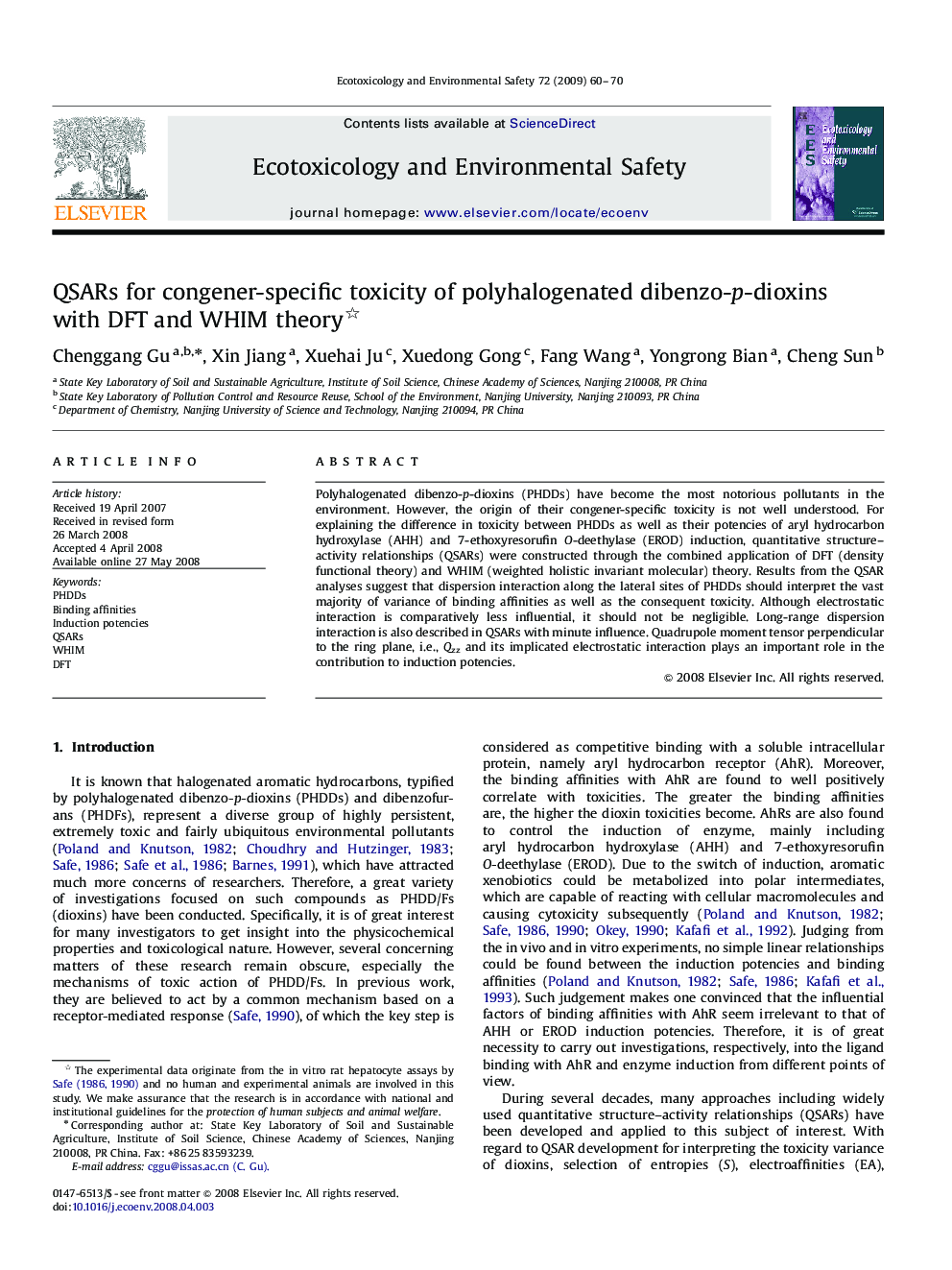| Article ID | Journal | Published Year | Pages | File Type |
|---|---|---|---|---|
| 4421610 | Ecotoxicology and Environmental Safety | 2009 | 11 Pages |
Polyhalogenated dibenzo-p-dioxins (PHDDs) have become the most notorious pollutants in the environment. However, the origin of their congener-specific toxicity is not well understood. For explaining the difference in toxicity between PHDDs as well as their potencies of aryl hydrocarbon hydroxylase (AHH) and 7-ethoxyresorufin O-deethylase (EROD) induction, quantitative structure–activity relationships (QSARs) were constructed through the combined application of DFT (density functional theory) and WHIM (weighted holistic invariant molecular) theory. Results from the QSAR analyses suggest that dispersion interaction along the lateral sites of PHDDs should interpret the vast majority of variance of binding affinities as well as the consequent toxicity. Although electrostatic interaction is comparatively less influential, it should not be negligible. Long-range dispersion interaction is also described in QSARs with minute influence. Quadrupole moment tensor perpendicular to the ring plane, i.e., Qzz and its implicated electrostatic interaction plays an important role in the contribution to induction potencies.
